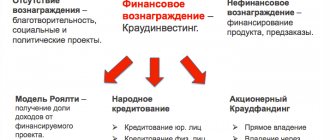Sample job description for a waiter
General provisions
- A person applying for a waiter position must meet the following standards:
- relevant specialized education;
- Experience in the catering industry from 0.5 years.
- The waiter is accepted into his position and leaves it as the manager of the restaurant.
- An employee in this position must know the following:
- specialized norms and laws regulating trade processes and treatment of consumers;
- restaurant provisions for interaction with visitors;
- types of cutlery and their purpose;
- the basics of interaction with colleagues serving visitors;
- table setting standards;
- principles of restaurant customer service;
- rules of mutual settlements with clients;
- organizing the delivery of received money and payment documents;
- cost of main restaurant dishes and drinks;
- the procedure for resolving possible conflict situations with clients, as well as options for their prevention;
- standards for accounting and use of relevant equipment;
- care rules for the equipment used;
- culinary properties and nutritional characteristics of the main dishes served in the establishment;
- recommended order of combining dishes, as well as rules for serving them;
- standards for serving alcoholic beverages;
- signs of defective and low-quality food products;
- standards of sanitary and hygienic policy of the restaurant;
- rules governing fire and technological safety in the restaurant, as well as sanitary conditions.
- The waiter is guided by:
- relevant laws and regulations;
- current restaurant standards;
- the contents of this instruction.
- During the waiter's absence, his labor functions are transferred to another employee selected by the restaurant manager.
- The waiter reports to the restaurant manager.
Job responsibilities
Responsibilities for this position include:
- Table setting and prompt cleaning.
- Ensuring prompt change of contaminated cutlery.
- Monitoring the availability of pepper, salt, toothpicks and other consumables.
- Fulfilling customer orders in terms of serving food and drinks.
- Informing visitors about the taste of the dishes served, the peculiarities of their preparation and nutritional value.
- Informing customers about the quality and taste of drinks, including alcohol, offered in the restaurant.
- Interaction with colleagues and managers regarding conflict resolution.
- Accepting payments from clients, issuing change, processing payment documents.
- Monitoring the situation with serving visitors in the restaurant premises.
- Assist in cleaning the restaurant premises at the end of the work shift.
- Participation in the decoration and design of the establishment when hosting special events.
- Participation in off-site restaurant catering for corporate events.
Responsibility
The waiter may be held liable in the following cases:
- For damage caused to the employer through his fault - within the limits established by the current provisions of the law.
- For improper performance of the functions set out in this instruction - in accordance with the provisions of labor legislation.
- For offenses committed in the course of work - in accordance with the current sections of the relevant legislation.
Rights
A waiter at work has the following rights:
- Make informed suggestions to improve customer service.
- Provide management with information on potential problematic issues in visitor service activities.
- Participate in staff meetings dedicated to the current situation in the functioning of the establishment’s personnel.
- Get acquainted with customer complaints about his work.
- Receive additional payments in case of field service and other situations provided for by the relevant provisions of internal documentation.
- Receive tips in the amounts specified in internal documentation.
Working conditions
- The waiter may be sent on a business trip in those cases that are specified in internal documentation.
- The employee may be involved in customer service at off-site events, including on weekends.
- At the expense of the employer, the employee is provided with branded work clothes.
- The waiter receives bonuses if the restaurant meets its targets.
Pros and cons of the profession
Every profession has two sides to the coin, and a waiter is no exception (Table 1).
| pros | Minuses |
| Warm room in winter, covered area in summer. | Stressful situations associated with a large flow of people. Often you have to resolve conflicts and smooth over rough edges. |
| Opportunity to receive a salary increase through tips. Their size depends on the quality of customer service and the status of the establishment itself. | Heavy physical activity. Have to carry heavy trays for 10-12 hours straight. The worker's back and legs are the first to suffer. |
| The demand for a profession associated with high demand. | The customer is always right. In some situations, you have to obey this rule to your own detriment. |
| In most cases, the shift schedule is convenient for the employee. | Instability. One day clients are generous with tips, the next they don’t leave, taking the change for themselves. |
| Not every restaurant requires experience. The employer often teaches this profession. | Material liability. The cost of each broken plate is deducted from the waiter's salary. Just like refusing a meal for an employee will result in a deduction from the salary. |
| Temporary job. It is rare to meet a person who has worked as an official all his life. More often than not, this vacancy serves as a transit point between career advancement. Students choose this specialty. | |
| No lunch break. But you can agree with the administrator about a twenty-minute break, subject to replacement with another employee. There will be time to have a snack. The cook prepares for the waiter, certainly not gourmet dishes, but passable. |
Video with the skills and knowledge of waiters:
If you follow these rules and the duties of a waiter in a restaurant, you can achieve excellent results and career advancement is possible.
Top
Write your question in the form below
Why is a job description required?
The employing company uses the instructions as a means of formalizing its interactions with the employee. This is especially important for large companies, with hundreds and thousands of employees performing a variety of jobs. In order not to waste the time of managers and employees themselves on consultations and arguments about their rights, duties and areas of responsibility, a job description is used that describes these points in as much detail as possible.
This document is also important for the employee, as it allows him to calmly do his work, without being distracted by secondary responsibilities not specified in the instructions.
Important! The job description should not contradict the employment contract, and also describe those responsibilities that go beyond the boundaries of the employee’s job function described in it.
What to remember when writing instructions
The labor legislation does not yet contain provisions that regulate the preparation of job descriptions. Taking advantage of this, restaurateurs can adapt its content to their needs. As for the format, a standard instruction plan is usually used, which includes:
- General provisions.
- Job responsibilities.
- Rights.
- Responsibility.
The employer can add a few more points to these sections if he wants to specify some points in more detail. The following additional sections are especially popular:
- Criteria for assessing performance results.
- Job relationships.
- Working conditions.
Additional parts to the instructions are usually added by large organizations that seek to formalize as much of their relationships with employees as possible.
Introductory part
The section is devoted to the formulation of the basic parameters of interaction between an employee and his employer. Here is a description of who hires the employee, to whom he reports and other main working points.
Of particular importance is the list of knowledge that an employee must have. They should be consistent with the list of functions listed in the next section. Requirements for the employee’s level of education and work experience also play a significant role. In the premium segment, they can significantly exceed the generally accepted level for a given position. So, the waiter may be required to know spoken English or the intricacies of working with wines.
Important! Waiters in terms of functionality and other parameters can differ quite greatly from different employers. A high-end restaurant, wine bar or corporate cafeteria all have their own specifics that should be taken into account in this section, including when listing the required skills.
Responsibilities
This part is reserved for the list of employee job responsibilities. Typically, a set of standard functions is listed here, which can be supplemented with several items related to the specifics of the employer’s activities. So, in some restaurants the waiter takes part in cleaning the room after finishing work, in others he helps decorate the interior for festive events.
Responsibility
This part provides a list of actions for which an employee may be punished in accordance with the employer’s documentation and legislation. Punishments are prescribed in a general form, since the specific degree of responsibility can only be determined through administrative and judicial disputes.
Rights
A final standard section that lists the employee's rights. For ordinary employees, which include waiters, the rights are quite standard, but can be expanded if the employer wishes.
Working conditions
One of the additional sections set aside by the employer for a description of benefits and specific points. This section usually refers to the provision of branded work clothes by the employer to the waiter, as well as his involvement in off-site service.
After the initial drafting of the job description, it must be approved by the relevant specialists. Usually a lawyer and an HR manager are involved for this. After taking into account their edits, the document is approved by the head of the organization. Next, the document is printed in compliance with all official attributes: date, information about the organization and other parameters. After this, the employee himself gets to know him during the hiring process. The final stage of putting the document into effect is the affixing of signatures by the persons involved: the employee himself, the head of the organization and other employees, if their signatures are required by current document flow standards.
More about responsibilities
The main responsibility of the waiter, as the main character who communicates with guests, is hospitality and politeness. When meeting and serving guests of an establishment, waiters should be pleasant in communication and truly radiate a desire to help. Otherwise, visitors are unlikely to want to visit the establishment again, even if the dishes were amazing.
The waiter must know what the dishes that fill the menu are made from . You need to be able to recommend such dishes to guests so that they are satisfied. After all, the visitor may turn out to be a vegetarian or vegan; perhaps religious beliefs do not allow the consumption of certain types of foods. Therefore, the waiter must not only know what a particular dish is made of, but also how it was prepared and what ingredients are included in its composition. It is also important to know how long it will take to prepare a particular dish.
In addition to the menu, the employee serving customers should be able to recommend appropriate alcoholic drinks that will perfectly suit the ordered dishes. If there are cocktails on the bar menu, then you need to know all the ingredients that are included in its composition, the taste and appearance of the cocktail.
The hall employee who serves customers must know which products are currently unavailable and, accordingly, which dishes cannot be prepared. You should also be aware of which dishes or snacks are currently in limited quantities, so that in the case of a large company, one of the visitors will not be left without an ordered dish.
Any person hired as a waiter must know and understand how to properly set a table, understand cutlery, bar glass and table linen. He must know and be able to properly tidy up the table after visitors, and be able to clean the table if guests have spilled or broken something.











